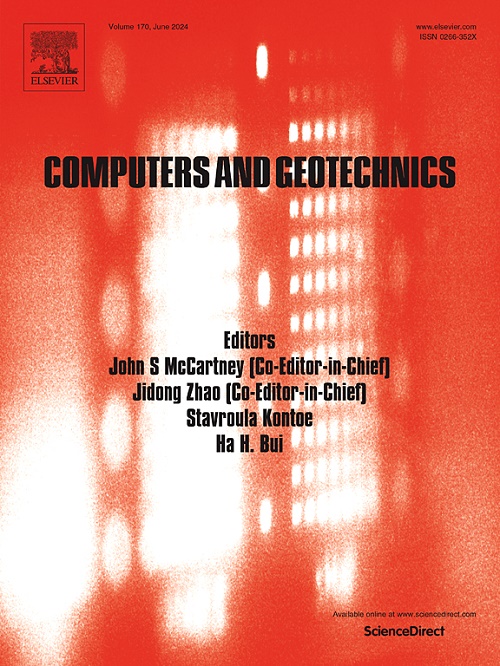A novel surrogate model for hydro-mechanical coupling in unsaturated soil with incomplete physical constraints
IF 5.3
1区 工程技术
Q1 COMPUTER SCIENCE, INTERDISCIPLINARY APPLICATIONS
引用次数: 0
Abstract
Physics-informed neural networks (PINNs) are increasingly employed for surrogate modelling of soil behaviour. Existing surrogate models for unsaturated soil only account for seepage in rigid soil, neglecting the complex coupling between deformation and seepage in unsaturated soil. This study develops a new surrogate model for hydro-mechanical coupling in unsaturated soil using the PINN approach. Dimensionless governing equations, including mass balance and force balance equations, are derived and adopted for physical constraints. With absence of explicit constitutive relations, this new surrogate model utilises sparse measured data to identify pore water pressure, effective stress and deformation in unsaturated soil. Separate neural networks are employed to facilitate efficient back-propagation for coupled problem involving multiple outputs. The newly developed model is then applied to simulate two cases with sparse measurements in unsaturated soil. The results illustrate that the newly developed surrogate model successfully learns the elasto-plastic constitutive relation of suction-induced volume change from experimental data. Meanwhile, model predictions regarding both water flow and stress distribution align within the 95 % confidence interval of theoretical values, demonstrating interpretability of PINN model. Furthermore, by adhering to physical constraints, the relative error in predicting soil deformation from neural networks significantly reduces from 49 % to less than 10 %. These findings suggest PINN model with separate networks is capable to simulate unsaturated soil considering both deformation and seepage, even with sparse measured data and incomplete physical constraints.
求助全文
约1分钟内获得全文
求助全文
来源期刊

Computers and Geotechnics
地学-地球科学综合
CiteScore
9.10
自引率
15.10%
发文量
438
审稿时长
45 days
期刊介绍:
The use of computers is firmly established in geotechnical engineering and continues to grow rapidly in both engineering practice and academe. The development of advanced numerical techniques and constitutive modeling, in conjunction with rapid developments in computer hardware, enables problems to be tackled that were unthinkable even a few years ago. Computers and Geotechnics provides an up-to-date reference for engineers and researchers engaged in computer aided analysis and research in geotechnical engineering. The journal is intended for an expeditious dissemination of advanced computer applications across a broad range of geotechnical topics. Contributions on advances in numerical algorithms, computer implementation of new constitutive models and probabilistic methods are especially encouraged.
 求助内容:
求助内容: 应助结果提醒方式:
应助结果提醒方式:


